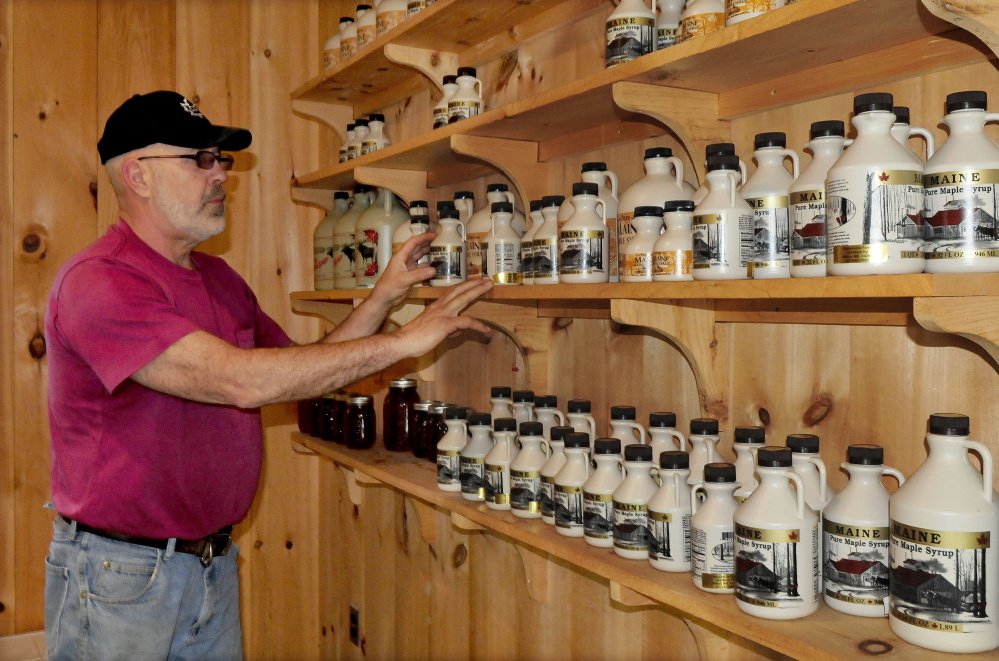Maine’s western mountains region – Oxford, Franklin and Somerset counties– is the birthplace of many of Maine’s most iconic rural industries. From Hugh Chisholm and the paper mills of Livermore Falls, Jay, Mexico and Rumford, to W.S. Wells’ canned vegetables, to the famous Weejuns of George Bass and his descendants, to the toothpicks, golf tees, clothespins and assorted wood products shipped from Forster Manufacturing of Wilton and its many competitors in the wood-turning business, this region’s forests, fields and rivers gave birth to a continuous flow of products that served national and international markets andbrought jobs and wealth to rural Maine for more than a century and a half.
But over the past 30 years, the same forces of technological change and entrepreneurial investment that brought the region such prosperity have spread to every corner of the globe, undercutting Maine products and leading to the decline and closure of many of these long-term sources of wealth and prosperity. This inexorable change has a two-pronged effect: an immediate decline in employment, and a slower, longer-term shift in demographic structure.
As the slow growth from the Great Recession has gradually accelerated over the past year, new opportunities for creating jobs, wealth and prosperity have emerged. If the people of Maine’s western mountains region are to take advantage of newly emerging technologies to create new jobs – as their forebears did in the late 19th and early 20th centuries – they must recognize and respond to the demographic challenge that stands as a potential barrier to any solution to their economic challenge.
The two-fold nature of this challenge is evident in a comparison of the labor market and population data. Over the most recent national recovery (2010 to 2016), employment in the three-county region grew by just over 400 – an increase of 0.7 percent. Over the same period, however, the region’s labor force (the number of people holding a job or looking for a job) fell by nearly 3,500, a drop of over 5 percent. Clearly, this represents a significant barrier to returning the region to its former prosperity. One can’t continue growing employment while the labor force is declining.
Over the same period, the region’s population (as reported in census estimates) fell by nearly 2,500. Nearly 1,500 more people died in Oxford, Franklin and Somerset counties than were born there; nearly 1,000 more people moved away from the region than moved there from another region or state; and about 150 more people moved there from abroad than left for another country. Yet, as overall population growth largely declined, the population of those age 65 and older grew by nearly 3 percent.
This stark contrast between an expanding range of possible economic opportunities and an aging (and, therefore, less economically engaged population) and the exodus of the most motivated of the prime working-age population is the essence of the economic challenge facing the region’s citizens and public policy makers.
All these facts make the task of promoting and cultivating economic growth all the more difficult. It is no longer the old task of “smokestack chasing,” or even the broader notion of “job creation.” It is, first and foremost, talent attraction. The goal must be creating communities that young people will find attractive – welcoming, safe, family-friendly and well connected to the world beyond Maine.
There are signs that such opportunities are emerging. The growing national interest in “traceable” food, combined with Maine’s acres of cultivable land and ample supply of water for irrigation, hold promise for a rebirth not merely of growing Maine food, but also of packing it, transporting it and marketing it. Similarly, the effort to better serve the growing national demand for active and culturally varied tourist activities presents opportunities for the regions surrounding Maine’s ski resorts and associated hiking activities centered in and, increasingly, linked between Sunday River, Sugarloaf and Saddleback all the way to Greenville.
But, above all else, realization of these opportunities requires a direct admission of the demographic challenge. It is not enough to create a job. Economic success in rural Maine means both creating the job and attracting the person to fill it.
Consulting economist Charles Lawton, Ph.D., can be contacted at:
Copy the Story LinkSend questions/comments to the editors.



Success. Please wait for the page to reload. If the page does not reload within 5 seconds, please refresh the page.
Enter your email and password to access comments.
Hi, to comment on stories you must . This profile is in addition to your subscription and website login.
Already have a commenting profile? .
Invalid username/password.
Please check your email to confirm and complete your registration.
Only subscribers are eligible to post comments. Please subscribe or login first for digital access. Here’s why.
Use the form below to reset your password. When you've submitted your account email, we will send an email with a reset code.